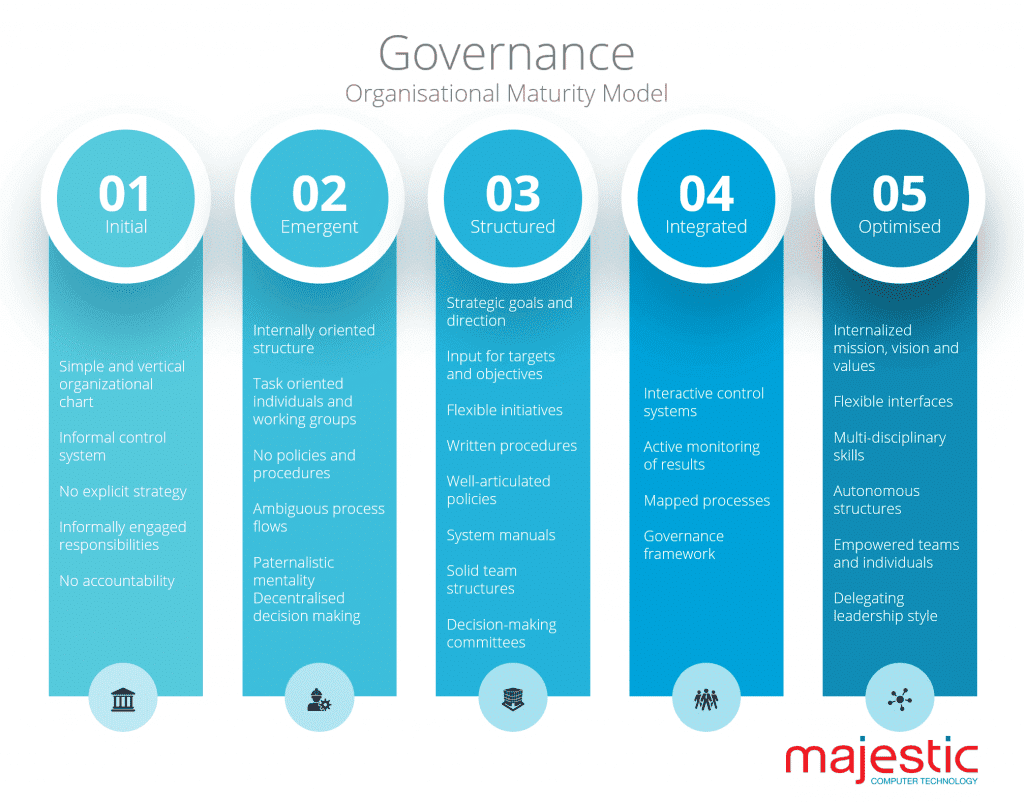Is your organisation fully optimised for success?
Over decades of experience, we have come to see that there is a range of behaviours that characterise the way organisations operate. This range is often indicative of the level of maturity they show in terms of their own organisational governance, their management structure and systems, operating processes and integration of services used to support the organisation’s growth and development. The Majestic Organisational Maturity model allows us to assess an organisation’s overall level of maturity against the 4 critical drivers or quadrants of success that enable organisations to achieve their objectives:
The process quadrant measures how well the work systems and operational processes are being followed, how well are they automated and how effectively they support the business’s operations.
The people quadrant relates to how the organisation’s people are conducting those operations, how effectively they are empowered to deliver outcomes, and ultimately how engaged they are and happy with what they are doing as a result.
The customer quadrant is measured in the context of customer (patient, member, etc.) retention. It measures how well they are being provided with the outcomes they require and how satisfied they are with the results.
The final quadrant is growth. We measure an organisation’s ability to consistently reach goals, aspirations and what they are looking to achieve over a given period of time.
The aim - best practice
The ultimate aim of the model is to measure how an organisation is performing across every one of these quadrants and identify how close (or far away) they are to being optimised to best practice levels. It helps highlight the areas that require more improvement or investment to greatly increase the probability that they will achieve their objectives in the time frame they desire.
The best practice approach requires a holistic focus rather than just a systems-based one. An organisation that has achieved best practice, has ensured that they have an appropriately balanced approach to all 4 quadrants, and it’s backed by a process of continuous improvement.
When a holistic approach is taken, each part of the organisation is getting what it needs. Tasks can be performed more efficiently, which reduces costs, staff are less frustrated, which reduces employee turnover, and client satisfaction increases, which is ultimately the primary purpose of the organisation.
How well does your organisation measure up?
In order to gauge where an organisation sits within each quadrant in relation to best practice, we also created the Majestic Governance Meter. The Governance Meter allows organisations to identify themselves against one of five levels of maturity as applicable to each quadrant. This helps to identify the areas where the organisation is performing well and those where additional focus is required.
So, how well does your organisation measure up?
This is a question that all key leaders should be asking because until an organisation has achieved, and can sustain, a level 5 in every quadrant, there remains the fact that your organisation continues to perform sub-optimally, but on the flip side, has the capability to achieve greater impact in the future, by improving the maturity levels in each quadrant.



